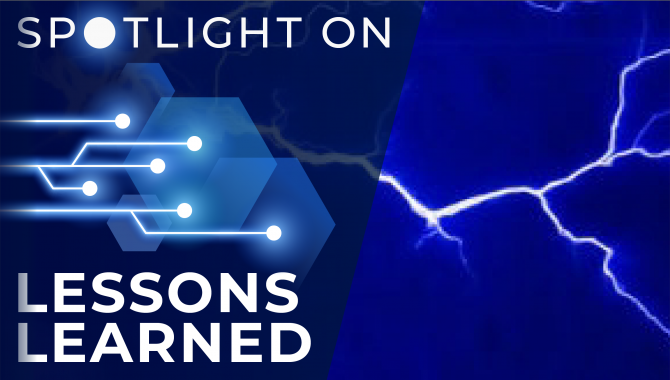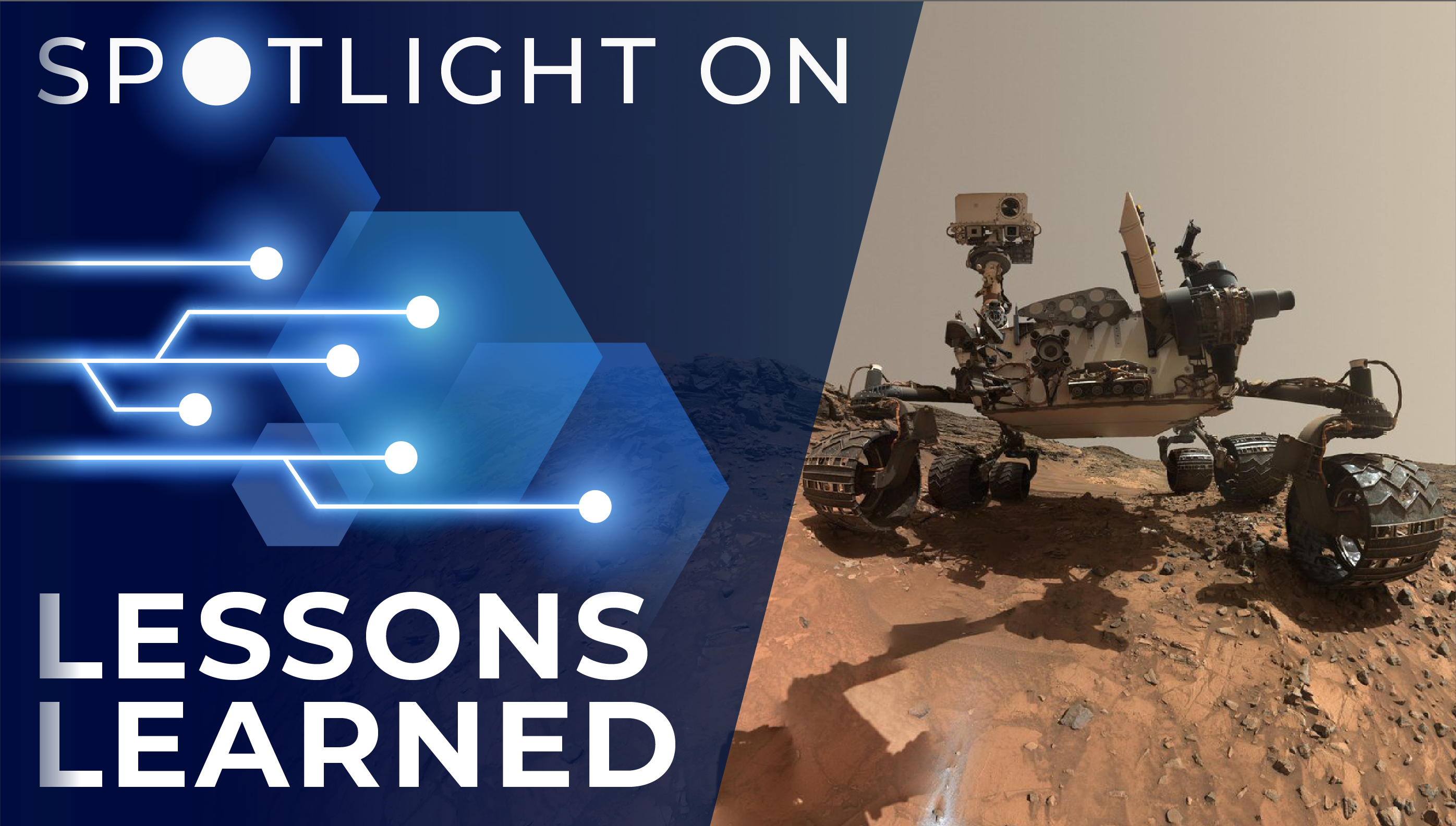
When an electrician at NASA’s Johnson Space Center suffered burns due to a pre-existing condition in a power distribution panel, one of the lessons learned was the importance of managing installation and maintenance records as government property.
The pre-existing condition – believed to be an access panel fastener that had penetrated conductor insulation – led to a ground fault in a three-phase, 480-volt power supply. The fault on the power distribution panel’s main breaker resulted in an electrical arc/blast that burned the electrician.
A contributing factor to the incident was the lack of work access history, which was tracked ultimately to the loss of maintenance data during support contract turnover. Maintenance schedules and data were not routinely obtained by the government at contract termination.
Records were not available to indicate if or when preventative maintenance had been performed on the breaker. Specific transformer maintenance records indicate that five-year preventative maintenance was performed on the primary building transformer 14 months before the mishap, but no work order was issued to perform maintenance on the main breaker of the power distribution panel. The only record of past testing of the breaker was a test certification sticker from the time of installation 10 years before the mishap. During a 10-year period, cables would have been disconnected from the breaker on two occasions, providing opportunities for preventive maintenance. However, the loss of maintenance schedules during contract turnover led to omission of the power distribution panel from the inspection schedule, and increased the risk of a mishap.
Lesson Number: 1718
Lesson Date: October 1, 2004
Submitting Organization: Johnson Space Center
HIGHLIGHTS
LESSONS LEARNED
- Facility installation and maintenance records must be generated and managed as government property.
RECOMMENDATIONS
- All installation and maintenance documentation should be held in a repository maintained by the contractor and owned by the government.
- Follow-on contractors must have compatible information systems with electronic data transfer capability.
Consult the lesson learned for complete lists.
Johnson Space Center CKO Jim Rostohar on the importance of this lesson learned:
This is an example where knowledge management and proper record-keeping can save lives. The power of information influences nearly every decision we make. Good data enables breakthroughs while promoting safe operating conditions. Access to timely information helps us to make smart choices when considering decisions. Employees, engineers, scientists and technicians rely on history in the form of lessons learned, case studies, processes and procedures to make decisions in real time.
In a safety perspective, efficient knowledge management is important for learning purposes and thus to prevent errors from occurring repeatedly. The importance of safety compliance appears in numerous accident investigations involving high-risk operations. These identify a lack of attention to regulations, rules and governing procedures as a central contributing factor. Much research has been done on the impact of individual, organizational and environmental factors on the level of safety compliance at diverse work sites and industries.
The collection and distribution of experiences about incidents and nonconformances throughout the organizational system are important in order to exchange lessons learned and prevent errors from occurring repetitively. Keeping employees up-to-date on potentially dangerous situations and facilitating the application of previous experiences in order to improve work processes are central to the safety and health of the workforce.
This type of knowledge collaboration can take place through a number of different mechanisms, and the use of information and communication technologies represents one means for collection of experiences and dissemination of knowledge. Use of knowledge exchange systems or electronic knowledge repositories to improve the processes of transfer and reuse of existing knowledge has become commonplace in most successful organizations.
Knowledge management and the use of knowledge sharing systems is essential anywhere that safety is involved. This is particularly true in the context of high-risk, dispersed organizations where similar work operations take place at different locations, and where exchange of experiences may be difficult to achieve by use of tacit transfer or personal channels.
Spotlight on Lessons Learned is a monthly series of articles that feature a valuable lesson along with perspective from NASA’s knowledge management community on why the lesson is important. The full lessons are publicly available in NASA’s Lessons Learned Information System (LLIS).
If you have a favorite NASA lesson learned that belongs in the spotlight, please contact us and be sure to include the LLIS Lesson Number.










